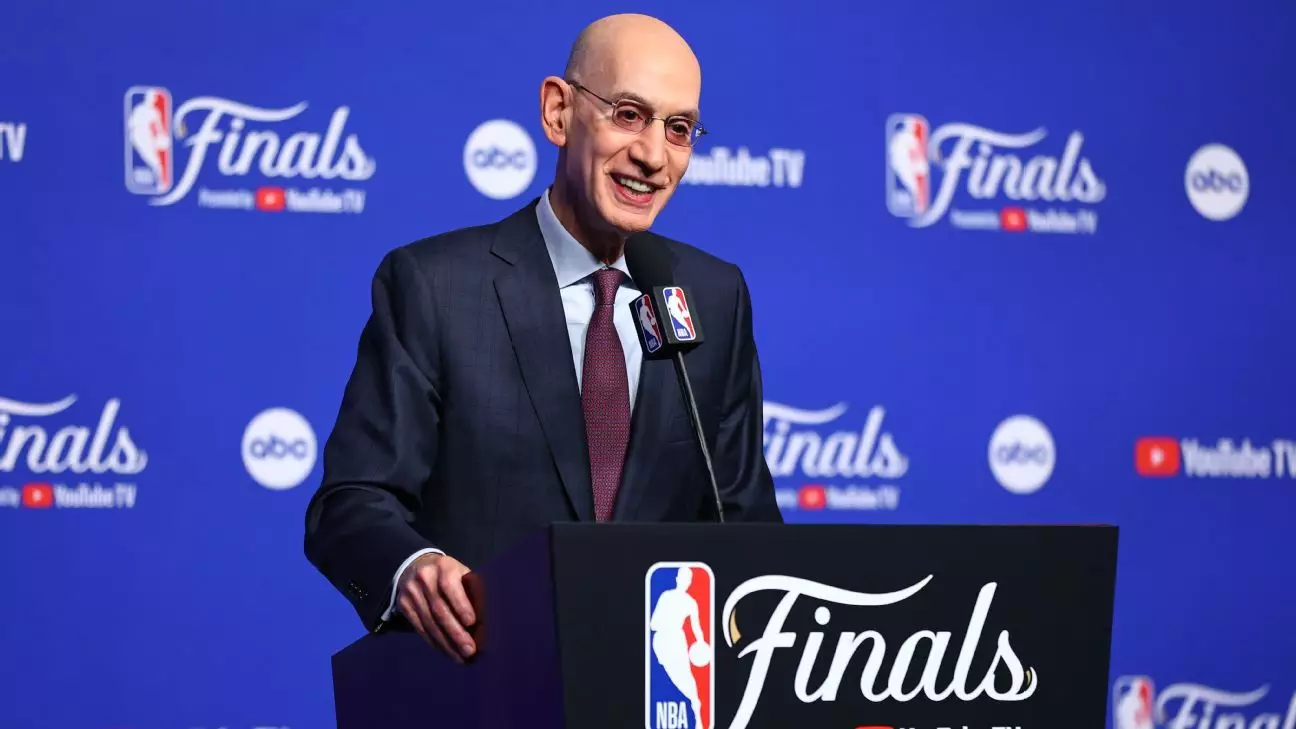The National Basketball Association (NBA) stands on the brink of a significant transition as discussions about expansion heat up. NBA Commissioner Adam Silver recently disclosed that a formal conversation about adding new franchises would be on the agenda during the board of governors meeting in Las Vegas next month. This potential expansion is poised to reshape the landscape of one of the most beloved sports leagues in North America. With Silver echoing sentiments of growing interest among team owners, it seems we are edging closer to the realization of NBA teams in underserved markets—whether that be in Seattle, Las Vegas, or other cities.
This strategic maneuver offers the agency a chance not merely to grow but to reinvent itself. The novelty of additional franchises raises questions around how the NBA can maintain its identity while embracing change. Silver mentioned that the aim is to gauge “the temperature of the room,” highlighting a commitment to inclusivity as he seeks perspectives from various stakeholders. The reality is that expanding the league is not merely about introducing new teams; it’s about solidifying the NBA as a dominant force throughout the United States and beyond.
Championship Dynamics and Competitive Balance
One of the topics that Silver addressed was the remarkable streak of new champions in the NBA—each year brings a fresh contender to the forefront. The notion that this shift may be a byproduct of recent changes to the league’s collective bargaining agreement invites further scrutiny. Silver, however, is quick to clarify that the goal of these adjustments was never simply to rotate champions. Instead, creating parity within the league takes precedence. The impressive run of different champions signals a competitive environment that is flourishing, a concept that appeals to fans and owners alike.
This focus on opportunity shouldn’t merely be seen as an arbitrary measurement of success but as a way to build a robust foundation for future expansion. Teams such as the Oklahoma City Thunder and the Indiana Pacers have demonstrated effectiveness in managerial and operational strategies that adhere to this ethos of competency. Should the expansion discussions evolve into a reality, these teams could serve as blueprints for the future.
All-Star Game Innovation: A Call for Community
With expansion planning gaining momentum, Silver’s comments about possibly changing the format for the All-Star Game reflect a broader shift toward inclusivity and community engagement. The idea of introducing a “Team USA vs. the World” format aligns well with the global reach of basketball and the league’s commitment to international representation. It resonates with narratives that celebrate diversity and teamwork—essential values in today’s interconnected sports landscape.
This evolution in the All-Star Game could generate renewed excitement among fans while also embracing the spirit of competition. The timing of this change is significant, particularly with NBC reviving its partnership with the NBA during a period packed with dynamic sporting events such as the Winter Olympics. Such synergies are invaluable, providing opportunities for cross-marketing and fan engagement that could enhance the NBA’s brand significantly.
Game Structure: The 82-Game Dilemma
As Silver opens the door to new possibilities, discussions about the traditional 82-game season remain contentious. The commissioner’s staunch defense of the current structure, arguing against reduction based on injury data, illustrates the complexities inherent in navigating league changes. Critics highlight fatigue and injuries as valid concerns that warrant review, while proponents of the existing framework herald it as foundational to the league’s competitive integrity.
The conversation around the number of games is one that encompasses various layers of revenue generation, fan engagement, and player welfare. Any decision made must balance these multifaceted concerns while keeping in mind the league’s foundational ethos—ensuring every team has a fair shot at success resonates deeply with fans.
The Future: A Determined Path Forward
The NBA finds itself at a pivotal fork in the road. Expansion discussions reflect a broader ambition to capture untapped markets while fostering growth in existing franchises. As the commissioner emphasizes the importance of equitable opportunities, the league seems poised to usher in an era characterized by diversity, competitiveness, and innovative engagement strategies.
However, the realization of this vision is contingent on collaborative effort and commitment from all stakeholders involved. Whether through the introduction of new teams or the reimagining of storied traditions such as the All-Star Game, the overarching theme remains centered on the evolution of the NBA. In pursuing these goals, the league is not merely laying the groundwork for its future; it is redefining what it means to be a premier sports institution.

